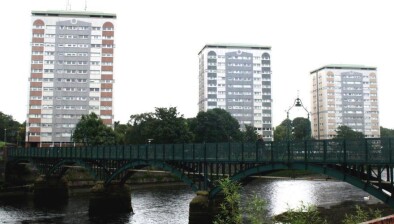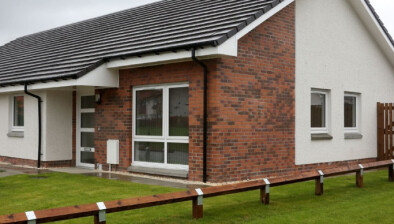Asbestos find is death knell for Ayr High Flats

The discovery of asbestos in Ayr’s High Flats is set to ensure the demolition of the three blocks located at Riverside Place.
Pre-demolition work has begun on the first of the three blocks, with an asbestos survey completed last week.
The results of the survey are yet to be reported by South Ayrshire Council, but Councillor Martin Kilbride, housing portfolio holder confirmed that surveyors have discovered asbestos in the first block.
Conservative council leader Martin Dowey had previously signalled plans to try and save the flats from demolition, however, the discovery of asbestos contamination makes refurbishment of the buildings very unlikely, with the scheduled demolition now set to continue.
Councillor Kilbride told the Local Democracy Reporting Service that an independent asbestos survey had been undertaken as part of the demolition contract, signed under the previous administration.
About 600 samples had been taken from the first block of flats during the survey and the results are due today, The Ayrshire Post reports.
He said: “We will have to look at just how much asbestos there is in the buildings and then look at the feasibility of refurbishment.”
The decision to demolish the buildings followed an assessment of cladding in the wake of the Grenfell Tower fire in 2017.
A council spokesperson said: “We can confirm that work has started on block one with an asbestos survey already completed.
“The results of the testing are due within the next week so we will then have an indication of the extent of asbestos in the building. Windows have not been removed but have been left open to ventilate the building while testing is undertaken.”
They added: “Ashleigh Construction are the main contractor for the works. There are currently two sub-contractors onsite, JJL who are carrying out groundworks and Central Demolition who will undertake the demolition of the block.
“Work was undertaken in March to remove all vegetation from the site in advance of the nesting season, so it’s not anticipated that this will be an issue going forward.”







